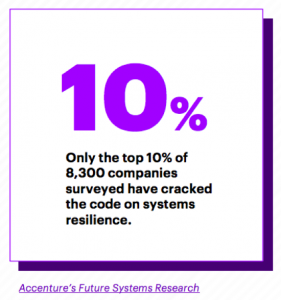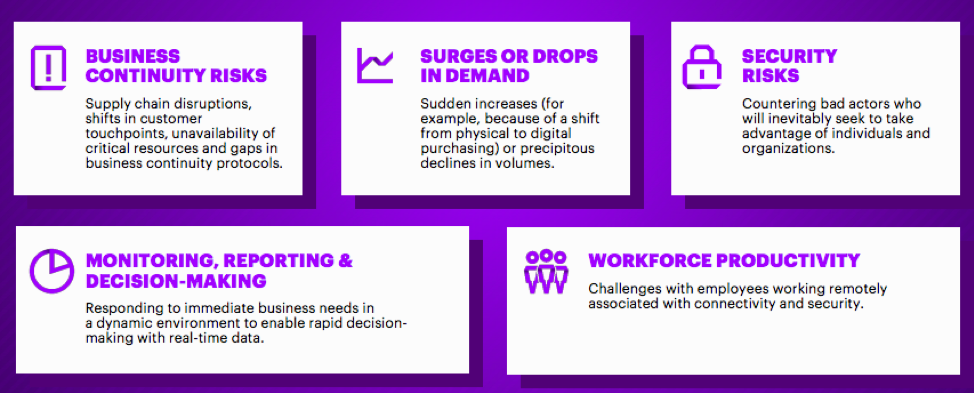Other parts of this series:
In this series, I’ve explored what carriers need to be doing now and cross-industry partnerships that are building trust with insurance customers through digital. But what about later? How can carriers ensure business continuity amid the uncertainty of the pandemic crisis? Systems resilience.
What is systems resilience?
Systems resilience describes a system’s ability to operate during a major disruption or crisis, with minimal impact on critical business and operational processes. This means preventing outages, mitigating their impact, or recovering from them. The Accenture definition of systems includes applications, architecture, data, cloud, infrastructure and network powered by Future Systems.
The COVID-19 crisis has tested systems resilience like never before. Disruption is almost constant and companies have realized how elastic (or not) their systems are. Addressing the stability of critical business processes and underlying systems is key for IT and business leaders to ensure business continuity.
The immediate challenge: Operations in a new reality.
Insurance companies are operating under a new reality that puts great strain on their systems. Continuity risks, demand, security, monitoring and workforce productivity are equally important to stabilize. But based on Accenture future systems research, 90 percent of companies across industry came into 2020—and therefore, COVID-19—on the back foot with a wide gap in systems resilience. Those who act quickly to address the immediate challenge will successfully navigate the crisis and emerge stronger.

What does systems resilience look like as the pandemic evolves?
Accenture has defined six key resilience building blocks that will enable a quick and reliable response to critical system vulnerabilities.
A few months in, learnings have come from steps one through three that will help steps four through six progress. Particularly as customer demand for digital offerings increases and remote work becomes more of the norm than not—which we will likely see a lot more of.
As an example Nationwide recently announced that their work from home model will now be permanent, with approximately 75 percent of staff continuing to work from home. Cloud technology will have been a key component to accomplishing this transition.
Cloud acceleration and optimization as a bridge to the future.
The ability for insurers to manage risk and deploy instant innovation at this time is imperative. Cloud tech can make companies resilient in the short term by navigating through extreme surges or drops in demand. This will be important as the pandemic evolves with inevitable drops and surges of its own.
Insurers can leverage the power of cloud with cloud-native solutions, like chatbots or diverting calls to digital channels. I’m willing to bet that this was part of what made the Nationwide transition a success. A cloud sandbox offers the capabilities needed to develop minimum viable products in just two to three days. As an example, Accenture partner Avanade was able to help deploy a new virtual assistant to manage the massive increase of calls when the country was at the peak of the COVID-19 outbreak.
Get your systems future ready.
Looking to the future, service continuity and cybersecurity are what will keep systems in step and adaptable to the inevitable changes of the COVID-19 crisis. I believe the insurance sector can serve as an important source of strength during the crisis and as a recovery mechanism for industry. Strategic use of Future Systems will enable resilience.
For more information on navigating Future Systems during COVID-19, reach out to me here or visit the Accenture COVID-19 resource hub.












